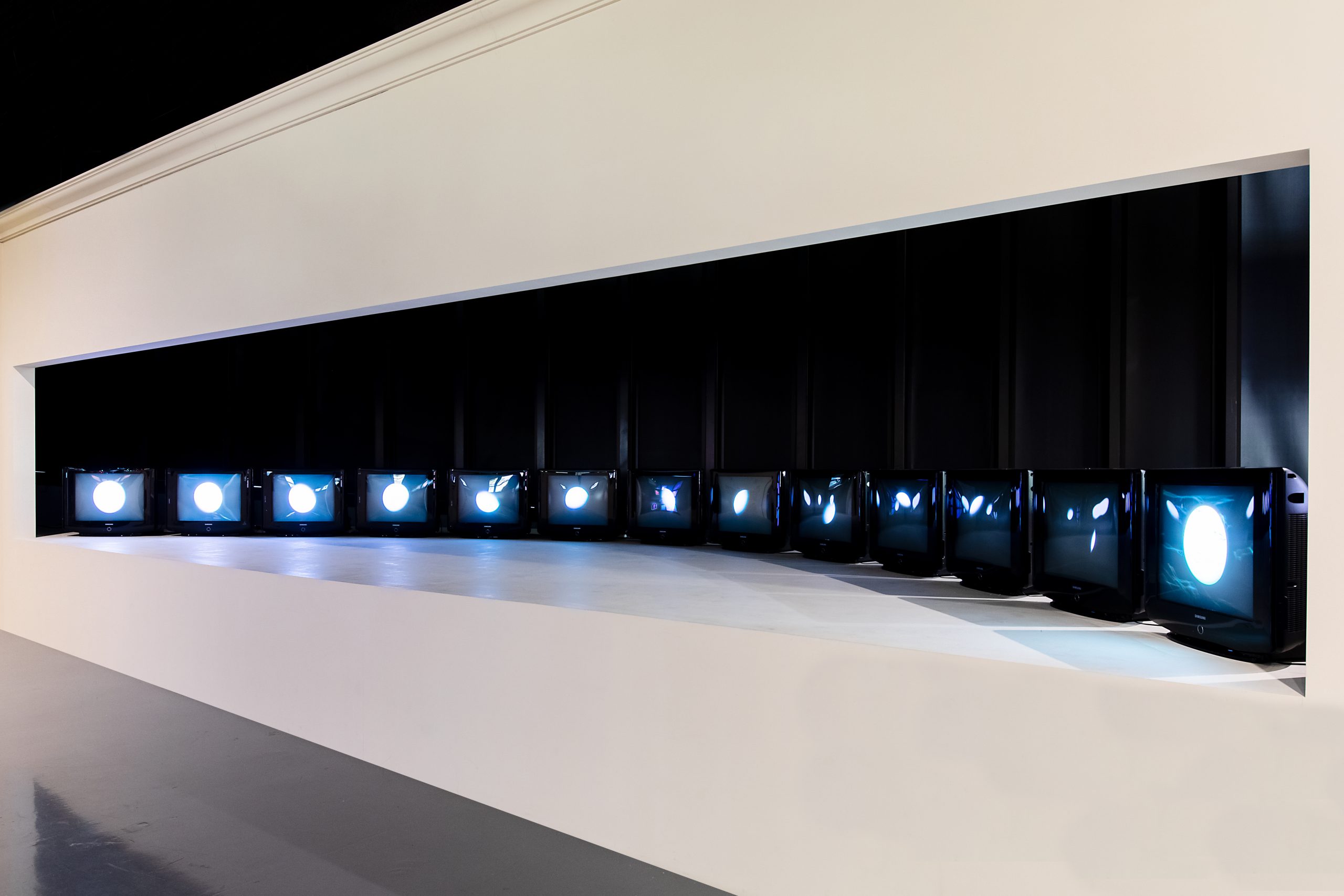Nam June Paik enjoyed playing with time parameters in a spatial coordinate through video. In this work, Paik shows the moon, one of the oldest sources of light in the history of humanity, through the television monitor. Twelve different stages of the moon from the crescent to the full moon are embodied in twelve televisions. When this work was first on display at Galeria Bonino, New York, in 1965, an early model of the vacuum-tube television was used. Paik produced different images that looked like the cycle of the moon, simply by fixing a magnet in the tubes and thereby interfering with electromagnetic signals of the internal circuitry. Looking at the twelve phases of time, the viewer is invited to reflect on the depth and length of time, as well as the ephemerality and eternity of time simultaneously. The title seems to allude to the fact that in times when there were no televisions, people projected images and imagined stories while looking at the moon, the only natural satellite of Earth, which may be analogous to watching TV. Nam June Paik began constructing this work in 1976 using twelve televisions. Moon is the Oldest TV, held by Nam June Paik Art Center, consists of thirteen monitors, incorporating a video titled E-Moon (1999) into twelve computer-generated moons. This version was first presented at the Guggenheim retrospective exhibition, The Worlds of Nam June Paik in 2000.





